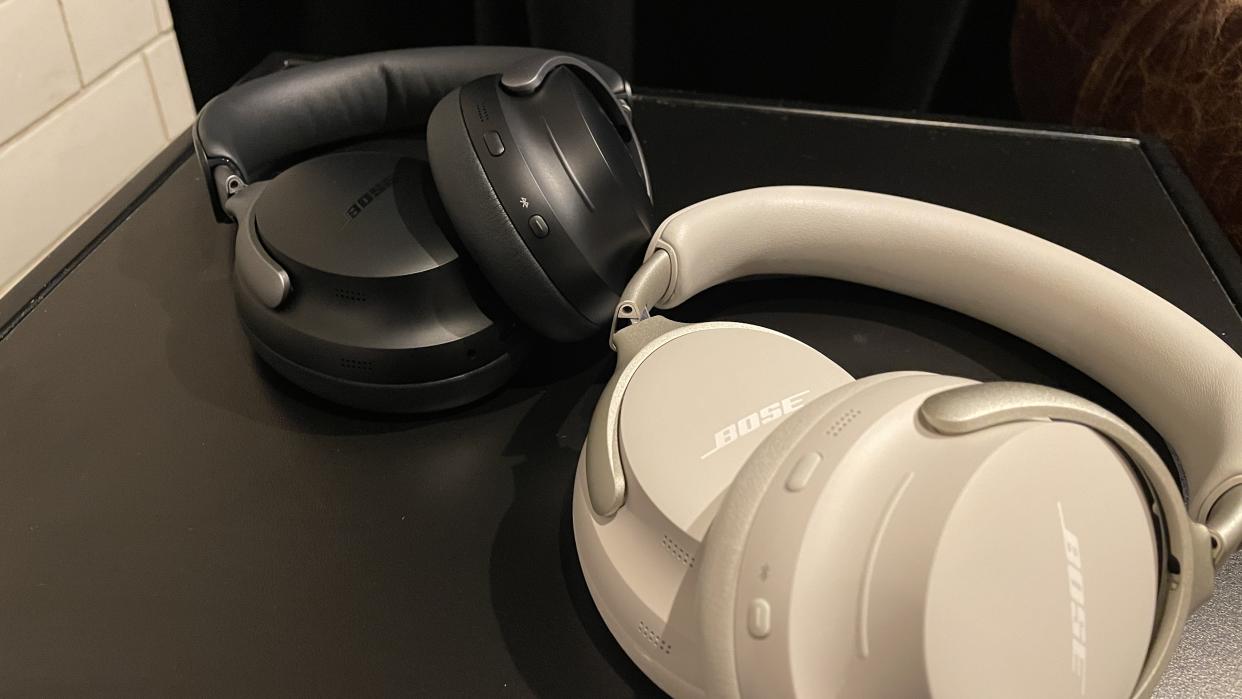4 ways the imminent Sonos wireless headphones could conquer Sony and Bose

For the best part of five years, the grapevine has been weighed down by rumours of Sonos wireless headphones being in development. But it could become unburdened in a mere few months as Sonos is expected to draw back the curtain on its first-ever pair around June.
It’s a move we’ve mused on since Apple shook up the market with its AirPods Max in 2018, and one that, if rumours are to be believed, looks to be even more innovative. After all, Sonos’s monopoly in the multi-room wireless speaker market makes it poised not only to offer something new altogether in the premium Bluetooth headphone space but also to raise standards that have long been set by Sony and Bose.
So how could Sonos headphones triumph over current class leaders like the Sony WH-1000XM5 and Bose QuietComfort Ultra Headphones? We’ve trawled through the Sonos wireless headphones rumours to highlight their potential four revolutionary features. If they all materialise, they have a good chance of becoming the most desirable wireless headphones on the planet. If they sound great too, of course.
1. Hi-res audio via wi-fi
There’s been a fair bit of talk about wi-fi coming to headphones, whether that’s primarily to allow for lossless hi-res streaming (which isn’t facilitated by Bluetooth technology, remember) or add smarter usability features. We’d be very surprised if one such pair didn’t materialise by the end of the year. What wouldn’t be all that surprising is if the first came from Sonos.
Reportedly lodged patents support this idea, and it’s even been said that the headphones’ production was delayed due to Sonos engineers grappling with how to fit two wi-fi antennae (and all the rest of it) into the over-ear design.
If the Sonos headphones did support wi-fi, that should open the gateway to unprecedented hi-res transmission in headphones when indeed that connection is available. The Sony WH-1000XM5’s wireless talents top out at LDAC, one of the higher-quality, yet still significantly compressed, Bluetooth codecs. The Bose QuietComfort Ultra Headphones, meanwhile, support aptX Adaptive, a codec that is even further from delivering hi-res losslessly (without compression).
Wi-fi listening would be a coup for Sonos’s headphones, even though they would almost certainly need to also rely on Bluetooth connectivity for on-the-go environments where wi-fi is not usable.
2. 'Smart' integration
Wi-fi wouldn’t only enable hi-res listening; it could also facilitate network features. We wouldn’t bet against headphones becoming all but miniature computers in your ears before long, though such implementation seems a little premature. More reasonable perhaps is them offering direct access to streaming services within Sonos’s ecosystem, presumably over voice control. More reasonable still is the idea of them interacting with other Sonos products.
One of the rumours we believe is most likely to materialise is the Sonos headphones getting the ‘Swap’ music hand-off feature, which debuted in the Roam portable speaker and allows you to easily pass whatever music it is playing to another nearby Sonos speaker simply by long-pressing its play/pause button.
The headphones implementation would presumably work the same way – after walking your dog while listening to a podcast through the headphones, you could come home and 'swap' the music to your home Sonos system to continue listening while you wipe their paws and fill up their water bowl.
3. Next-gen Bluetooth
Despite the likelihood of the Sonos pair introducing wi-fi support, wireless headphones without Bluetooth connectivity in this day and age would be like a phone without cellular. Sonos’s headphones will therefore have it, and perhaps even in next-gen form. Two years ago, the company bought a Kentucky-based startup company that specialised in implementing Bluetooth LE (Low Energy) Audio, a new standard of Bluetooth that, together with the new LC3 codec, promises more power-efficient, higher-quality audio compared to ‘standard’ Bluetooth audio (Classic Audio standard, SBC codec).
If this next-gen Bluetooth technology pairing finds its way into Sonos’s headphones, they could offer better-quality Bluetooth with a wider range of devices (that don't themselves support one of the high-quality codecs) than the Bose and Sony models... though not as high-quality audio passthrough as that between them and devices supporting LDAC and aptX Adaptive respectively.
It could also help them beat their two closest rivals on the battery life front during Bluetooth use. The Sony WH-1000XM5 offer 30 hours while the Bose QuietComfort Ultra Headphones claim 24 hours – both pretty beatable as Sennheiser’s Momentum 4 Wireless, with 60 hours of battery life, have proven.
4. Clean aesthetic with Sonos street-cred
There’s nothing wrong with how the Sony and Bose headphones look, but it’s difficult to deny that the AirPods Max brought next-level style to the wireless headphones market, even if they were a much pricier proposition. If Sonos can make a style statement at a price level closer to that of the popular Sony and Bose rivals, we could see a benchmark raised here too.
There’s little reason to believe it won’t, considering the design of other Sonos hardware – expect clean, sleek and all-white/black housings made of relatively luxury materials, potentially replaceable parts and the street-cred that comes with a Sonos logo that is bound to be brandished somewhere on the ear cups. The Sonys look smooth and streamlined, if cheaper than previous efforts, while the Boses are all the more attractive, but honestly, it wouldn't be too much of a stretch to surpass either in the aesthetic department. Bowers & Wilkins Px7 S2e-calibre looks please, Sonos.
MORE:
Read our Sonos wireless headphones rumour round-up – expected price, release date and more
New to Sonos? Here's which Sonos speaker you should buy
Sonos: everything you need to know about the multi-room king
Shop today's best Sonos deals
